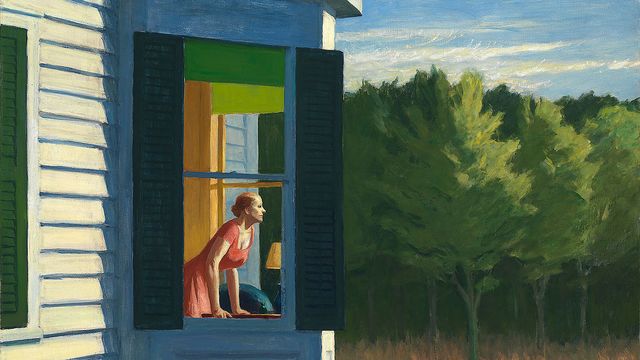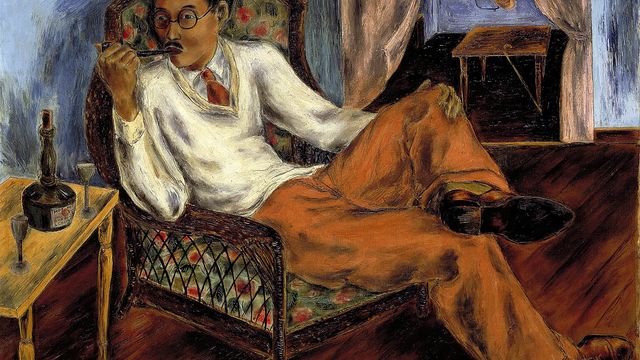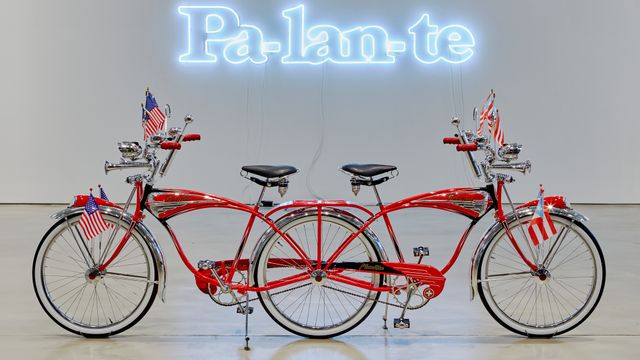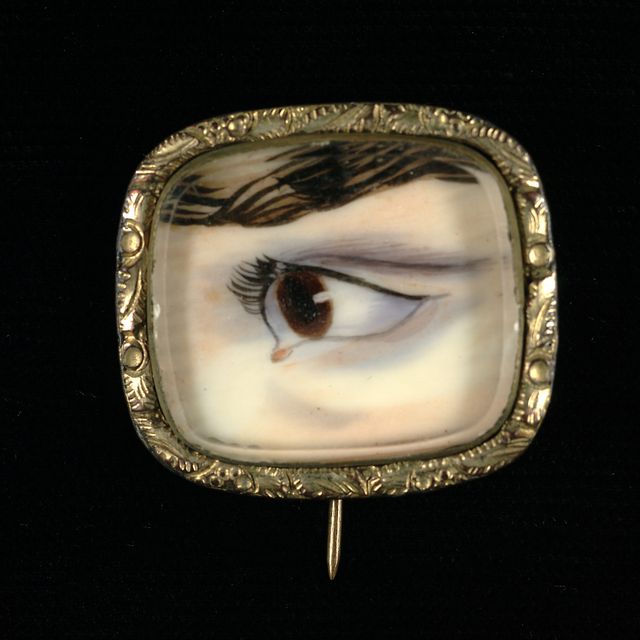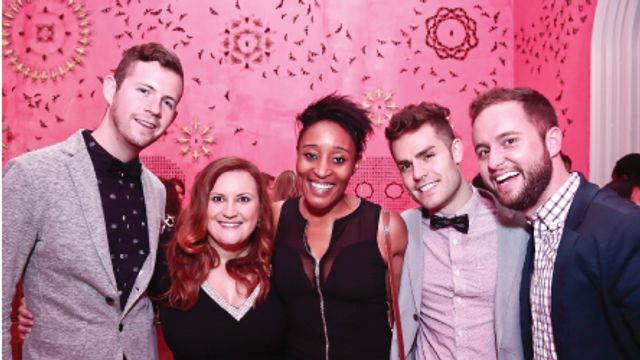Handi-hour Crafting: Friendship Bracelets
Video Player is loading.
Current Time 0:00
/
Duration 0:00
Loaded: 0%
Stream Type LIVE
Remaining Time -0:00
1x
- Chapters
- descriptions off, selected
- captions and subtitles off, selected
This is a modal window.
Smithsonian American Art Museum's Public Programs Coordinator Katie Crooks demonstrates craft activities for the Renwick Gallery's Handi-hour program currently being held at the Luce Foundation Center during the Renwick's two-year renovation.
To do these particular bracelets, all you really need are a couple of different colors of embroidery floss, some sort of instrument to create a way to hold the bracelet down while you’re making these knots. I have a binder clip here that I’m just going to clip right onto the tablecloth in front of me. If you don’t have a table in front of you, you could use a safety pin and just pin the start of the bracelet down onto your jeans. That works just as well. A piece of masking tape can work, too. I have a variety of colors of floss to use. Whatever pattern interests you most you can go with, and then scissors because you’re going to need to snip the floss once you’ve pulled out the right amount and cut it when you reach the end.
I’ve already pulled out a few different colors to get us started with. My sample bracelet that I made, I used pink, yellow, and white. For this bracelet, I have green, yellow, and orange. For the purposes of showing you guys, I wanted to make sure that I had a bunch of bright colors that contrasted one another so that you could see the individual threads. You could use just two pieces of floss to get started. Here I have three, so it’s going to be a little bit thicker of a bracelet. The more pieces of floss that you use, the thicker or wider your band will be.
You want to start with about 72 inches of floss. I completely estimated how much I have here, but it feels really long, so I think I’m safe. Then, what you’re going to want to do is bend it in half, and that’s how we’re going to get started.
For the top, you’re going to go ahead and take that loop, and you’re just going to make a really simple knot, bring it through, and when you’re pulling it tight, stop so you just have a little bit of a loop there, and you can use that to tie on the bracelet once you’ve finished. Go ahead and take that loop and, using your safety pin, your tape, or, in my case, your binder clip, you’re going to go ahead and fasten that somehow in front of you so it’s sturdy. This will work really nicely.
Then, go ahead and arrange your lines of floss. I’m going to want these to look just like my sample bracelet and go in colored lines so that it’s yellow, white, pink. So, I’m going to want these to go in a similar fashion. We’re going to do orange first, so pull my two orange threads off to the side. Then, we’re going to want to do green and then yellow, so they need to be in the order that you want the colors to go. Then, when you get started, pull off the bit of floss that is the furthest to the right-hand side or the left-hand side. You can start this whichever direction you want, just continue in that direction.
I like to start from the right. I’m going to pull off the right, and I’m going to go ahead and I’m just going to tie a slipknot and pull it all the way up to the top, and then I’m going to do it again. You always have to do two knots. That’s the most important part of these bracelets. So, there you go. I’ve done two here, and so now I’m going to move on to the next piece of floss. Continue pulling up your knots. So I did two on this strand of green; I move on to the next strand, and I’m going to go ahead and do two knots. You do this all the way across until you’ve gone through all of the different strands that you have in front of you.
So needless to say, creating these friendship bracelets takes a lot of patience. If you remember back to doing these when you were a kid all those long bus rides and things like that. That’s when apparently you had time to do this. So once you’re done, go ahead and pull and you’ve done all the way across, take that strand that you were using to knot, put it on the opposite side, so it’s going to go on to my left, and then I’m just going to kind of straighten things out up here and pull everything taut – push the knots that I just made up. It’s going to look a bit wonky to start. It doesn’t look beautiful until you’ve gone across a couple of times.
So then now, I started with two orange, two green, two yellow. Now it’s going to be orange, two green, two yellow, and then another orange. What you’re going to do as you make the bracelet is the piece of floss on the right-hand side is going to continue to move over, and so it will make the shift, so your lines will go in a slightly diagonal pattern, but they will come out as striped like the sample that I’ve already made. So I’m going to go ahead and quickly do the next round. Remember, each time you need to do two knots. So we’ll do two across the green and then the next bit of green. Then, we move on to the yellow. Your floss will get a little bit jumbled up, and that’s okay. You’ll easily be able to straighten it out. Just take the time and have patience. If you get knots, just work them out as they come along. Oops, and if your binder clip or tape pops off, that’s all right. Just tape it right back on.
So even now that I’ve only done two rows, you can definitely see that the bits of knots are starting to create the same type of striping that we have here. You’ll keep going until you’ve created enough of this wide, flat band to fit around your wrist. I’m just short on my sample one here, and that’s okay. What you do at the end is you do a simple braid just like you were braiding your hair. The simple braid towards the end so that you have something that you can lace through this top knot that you did before. So that’s how you tie your bracelet on in the end. Creating that nice, extra piece of braided bracelet will allow you to make it adjustable, so if you have someone small – maybe niece, nephew, daughter, son with tiny, little, childlike wrists – you can make it much tighter. If you’re making this for someone older or an adult, you can make it a lot larger, which is very nice, and you simply knot it on.
The idea of these friendship bracelets, they originated because a friend would make a bracelet for another friend, and you would tie that bracelet on, and when it wore off and actually fell off your arm, you were supposed to make a wish, and it would come true the day that the bracelet fell off. So they’re not meant to be sealed with a clasp that could be taken on and off. If you don’t want to risk losing this bracelet someday or you want to be able to take it off, just make it loose enough that you can slip it on and off of your hand, or perhaps tie it onto a key ring or a backpack, and it then becomes a tie or a pull as opposed to a piece of jewelry.



